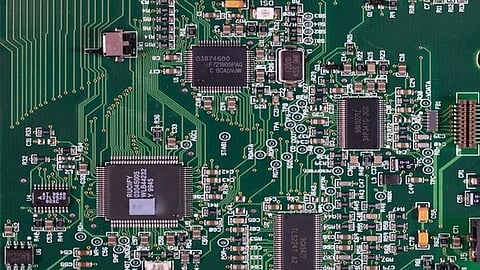
- News
- Campus
- Exam
- Podcast
- Web Stories
- Do You Know
- Path Finders - UG Programs
- Videos
- Élitscape

For decades, India’s brightest young minds often dreamed of working on technologies that seemed out of reach—chips, rockets, quantum computers. Those dreams are no longer distant. Under Prime Minister Narendra Modi, they are turning into reality, stitched into a national story of confidence and self-reliance. Modi has often said that “science and innovation are the pillars of Viksit Bharat”, and his government has treated this not as a rhetoric but as a roadmap.
In the first 100 days of his third term, we saw decisions that spoke of intent: a ₹1,000-crore fund for space startups, the National Biomanufacturing Policy (BioE3) to build a sustainable bioeconomy, and new systems to strengthen weather forecasting through space and IT integration. These moves, bold yet practical, signalled that India is not waiting for the world’s future, it is shaping its own.
Few things capture this better than semiconductors. For most Indians, a chip is invisible—it sits inside the phone, the car, the satellite. But in today’s world, semiconductors are power. They decide whether supply chains survive, whether economies thrive, whether nations remain secure. For too long, India depended on others for this power. That is now changing.
In August 2025, the Union cabinet approved four new semiconductor units worth nearly ₹4,600 crore in investment. With earlier approvals, the India Semiconductor Mission has already attracted projects of about ₹1.60 lakh crore across six states—spanning fabs, compound semiconductor plants, and design-linked initiatives.
Modi calls semiconductors “the new steel of the digital age”—and in his vision, India will forge this steel for itself.
The semiconductor story is just the beginning. India is also entering frontiers that once felt like science fiction. The National Quantum Mission, with an outlay of ₹6,000 crore, is nurturing hubs for computing, secure communication, sensing, and advanced materials. Partnerships with global leaders like IBM are ensuring that Indian scientists work shoulder-to-shoulder with the best in the world. The atmanirbhar 4G technology adopted by Bharat Sanchar Nigam (BSNL) in coordination with the Centre for Development of Telematics, Tata Consultancy Services and Tejas Networks is yet another step taken by the Union government. I have no doubt that in a few years, BSNL will be among the most trusted scalable and configurable telecom networks in the world.
Artificial intelligence is no longer just a buzzword, it is being woven into governance, farming, healthcare, and education. Modi has been clear that “technology must come with trust and transparency”, and India is positioning itself as a global voice for responsible AI. Startups working in cybersecurity, defence tech, and space systems are being encouraged to think big. Young innovators now see deep tech not as a Western dream but as an Indian opportunity.
And then there is biotechnology where technology meets life itself. BioE3 aims to make India a $300-billion bioeconomy by 2030. Built around the three Es—environment, employment, economy—it reflects Modi’s conviction that innovation must serve people and planet together. Biotech parks, green manufacturing clusters, and research incentives are ensuring that scientists working on the next medicine or sustainable material can do so in India, for India, and for the world.
What makes this push so different is the way it feels personal. Modi does not talk about chips only as industry, he talks about them as hope for a young graduate. He does not announce AI missions only as policy, he frames them as tools that will help a farmer predict weather or a doctor detect disease. In his words: “Technology must not remain locked in labs. It must touch the lives of the poorest, it must empower the youth, and it must become a bridge to Viksit Bharat.”
That is why this moment feels like more than policy—it feels like participation. The student writing code for quantum algorithms, the startup founder designing drones, the scientist in a biotech lab—all now know that their government is backing them, and that their work is not on the margins but at the centre of India’s story.
The road ahead is demanding. Semiconductors will require precision and scale, AI will need guardrails, quantum breakthroughs will take time. But the foundation has been laid. This year, ‘Made in India’ chips were realised. By 2030, India will be a global leader in biotechnology. Quantum hubs will expand, AI startups will multiply, and deep tech will no longer be a niche but a mainstream driver of growth.
For Modi, technology is not just hardware and code—it is pride, self-reliance, and trust. It is the quiet belief that India’s children should not dream of being jobseekers in Silicon Valley but of being job creators in their own nation. It is the conviction that India will not watch the tech revolution from the side-lines but will shape it, with its own values and its own people leading the way.
Critical and emerging technologies are no longer a side story—they are India’s next chapter. And Modi is determined that chapter will be written in India’s own hand.
V Kamakoti | Director, IIT Madras
(Views are personal)
